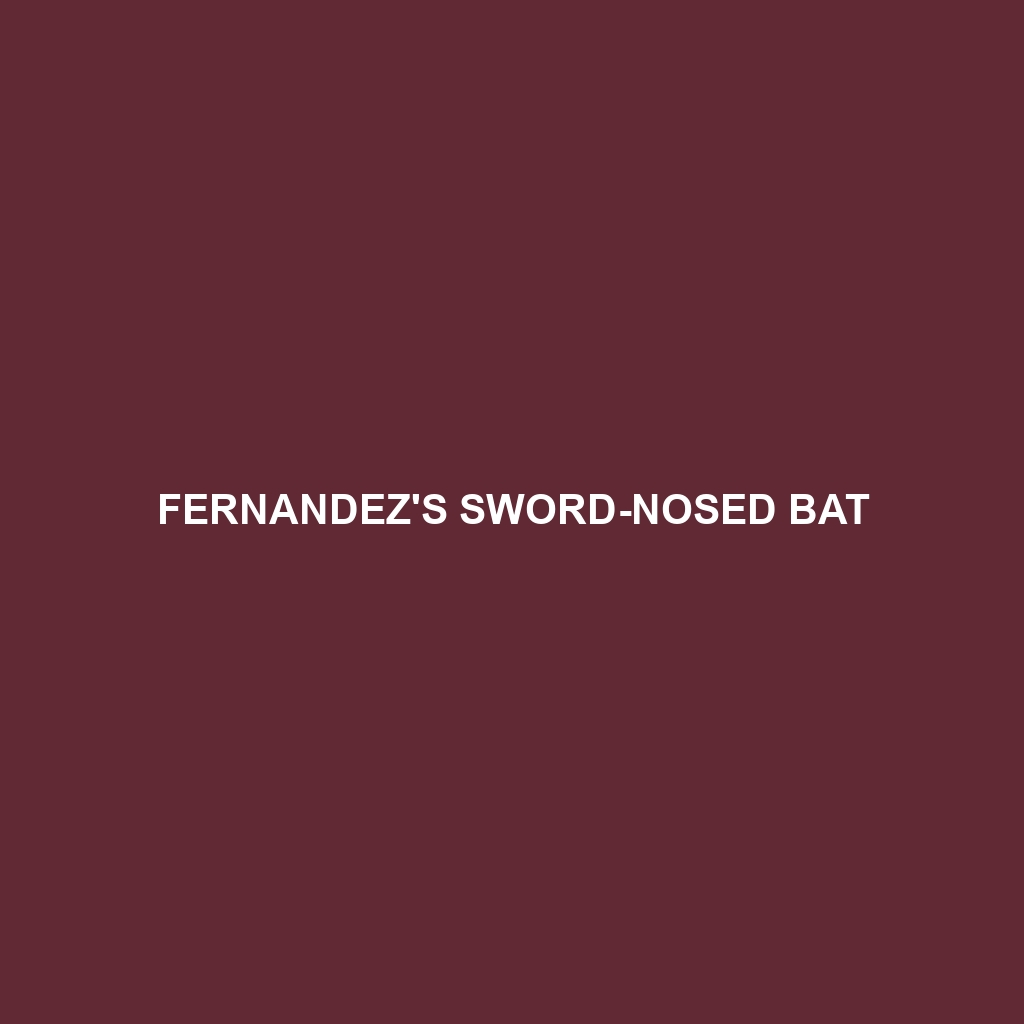Common Sword-nosed Bat
Common Name: Common Sword-nosed Bat
Scientific Name:
Habitat
The Common Sword-nosed Bat is primarily found in the tropical and subtropical regions of Central and South America. This species thrives in a variety of environments, including rainforests, cloud forests, and savannahs. Its range extends from southern Mexico through to Colombia and Venezuela, favoring locations with abundant vegetation and natural roost sites such as caves and hollow trees.
Physical Characteristics
The Common Sword-nosed Bat exhibits distinctive features that set it apart from other bat species. Typically, it measures between 7 to 11 centimeters in body length and has a wingspan of approximately 30 to 35 centimeters. Its fur ranges from light brown to reddish-brown, with a lighter underbelly. One notable characteristic is its elongated snout, resembling a sword, which aids in foraging. Additionally, the bat has large, expressive eyes and broad wings that facilitate agile flight.
Behavior
This bat species is predominantly nocturnal, emerging at dusk to hunt for food. Common Sword-nosed Bats are social creatures, often roosting in colonies that can number into the hundreds. They are known for their complex vocalizations used for communication and echolocation, which aid in navigation and prey detection. Their foraging behavior involves agility in flight, allowing them to catch insects mid-air.
Diet
The diet of the Common Sword-nosed Bat consists mainly of a diverse array of insects, including moths, beetles, and flies. With its specialized foraging techniques, this species is effective at catching insects on the wing by utilizing its swift flight and keen sense of hearing. During foraging, they exhibit unique feeding behaviors such as tail and wing manipulation to grasp prey.
Reproduction
Common Sword-nosed Bats typically breed during the warm months when food is plentiful. Breeding occurs around late Spring to early Summer, with females giving birth to a single pup after a gestation period of roughly 3 months. Maternal care is prominent, as mothers will nurse and protect their young until they are capable of flight and foraging independently.
Conservation Status
The conservation status of the Common Sword-nosed Bat is currently listed as ‘Least Concern’ by the International Union for Conservation of Nature (IUCN). However, habitat destruction due to deforestation and urbanization poses ongoing threats to their populations, emphasizing the need for conservation efforts to preserve their natural habitats.
Interesting Facts
– The sword-like nose of this bat is not only an adaptation for its diet but also plays a role in its distinctive courtship displays.
– Common Sword-nosed Bats can consume up to 1,000 insects in one night, making them vital for pest control in their ecosystems.
Role in Ecosystem
Common Sword-nosed Bats play a crucial role in their ecosystems as pollinators and natural pest controllers. By feeding on large quantities of insects, they help regulate pest populations, while their foraging activities also contribute to the pollination of nocturnal flowers, benefiting the biodiversity of their environments.
